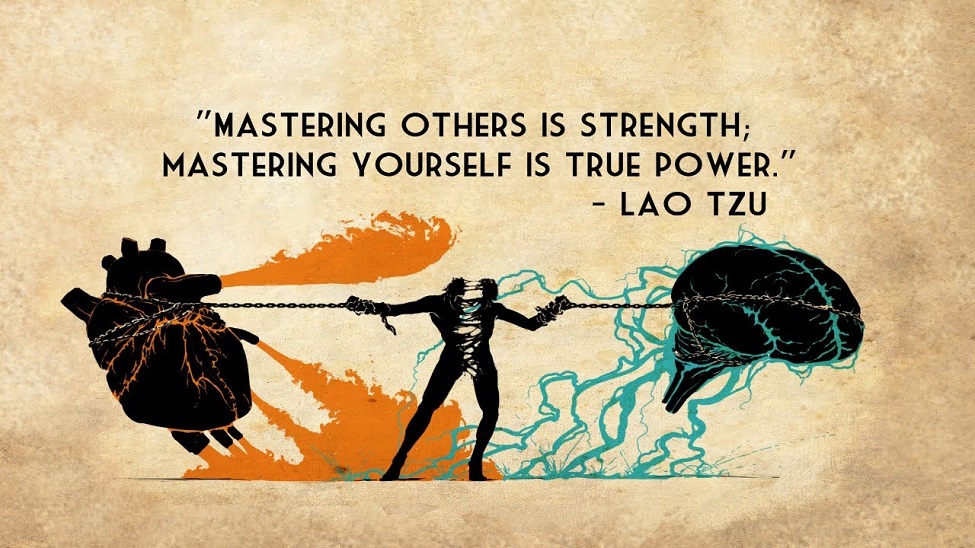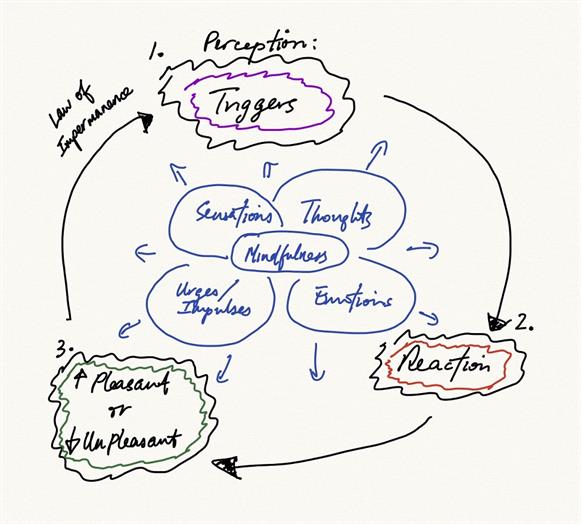
The year-end festivities are upon us, and yet the economic climate remains uncertain with the pace of life accelerating, layoffs increasing, cost of living
continuing to rise and suicide rates creeping up. This is a time typically intended for celebrations, joy and giving, but for some it remains a struggle.
In fact, this can be a time associated with even more stress and disorientation as we find ourselves lost in the shuffle of our relentless, fast-moving
society.
Is there a better way? Or are we going to continue living out our lives like hamsters spinning on the wheel in a race to nowhere?
“Knowing others is intelligence; knowing yourself is true wisdom. Mastering others is strength; mastering yourself is true power.” – Lao Tzu
Someone shared this quote with me when I was in Beijing last week delivering a leadership training program. Lao Tzu hit the nail on the head and got me
doing some stock-taking. While we grasp for external relief, coping mechanisms, quick-fix recipes and whatever help we can get to alleviate the modern-day
struggle, transformation begins when we begin the inward trek of mastering self.
We may not be able to change our jobs, our spouses, our bosses or our circumstances, but we can change our perception by looking closely at our “engine”
and illuminating what’s driving it: our “hotspots”, our habitual patterns and reactions, our beliefs, our values, etc.
In other words, we all have some form of behavioural DNA that dictates how we make decisions, behave and relate to the external environment and ourselves.
If we can deconstruct this cycle, perhaps we can hack it and live out our lives with more meaning and purpose. Amalgamating incumbent psychological
models of human behaviour, here’s what I came up with at the airport:

Our Behavioural Cycle
Phase 1:
Our sensory system receives information. Based on our perceptions, we appraise the triggers (stimuli) to kick-start this behavioural cycle.
Perceptions are a function of assumptions, world views and belief systems that operate at a subconscious level – i.e. mental shortcuts.
We use them to organise memories and optimise decision-making. They are all subjective and we all have them.
Triggers are our “hotspots”. They can originate from external sources such as our bosses, spouses or even the weather. Of course, they
can also come from within, such as our ego, our hurt, our disappointment and our desires. All of these can serve as a trapdoor to snap reactions and
activating our “autopilot” mode. Whether a stimulus triggers something is a function of our perceptions.
Phase 2:
Reactions are habitual patterns of behaviour that are evoked in the blink of an eye – they are our autopilot mode. More often than not,
we don’t even realize that we are in autopilot mode. This is a double-edged sword: this mode can protect us and help us cope and survive (e.g. the
fight or flight response), but under constant and persistent activation, it can lead to health issues. For example, my blood pressure tends to increase
when I have an approaching deadline, and over a longer period of time, related health issues could emerge.
Phase 3:
Subconsciously, we react in order to achieve two broad outcomes: to remove or lower an unpleasant experience, or conversely, to increase something that
is pleasant and pleasurable. For example, if we find an experience particularly boring (e.g. meditation), we may go into autopilot mode – even if only
very subtly – by tuning out as a form of coping so as to reduce this unpleasant experience.
Although we struggle to remove ourselves from the present moment to achieve more pleasant outcomes or reduce unpleasant ones, the Law of Impermanence dictates
that life is dynamic, unpredictable, volatile and uncertain. In other words, it is out of our control. So while we struggle to manipulate and shape
the present moment, we find that this is not possible. And this constant striving to achieve what is impossible fuels our perceptions and triggers
(Phase 1) as we enter a new cycle of striving and struggling incessantly and uncontrollably. This is the hamster wheel, and over time, you will wear
out.
A Mindful Interruption
So where does mindfulness fit in? In each phase, our mind-body is constantly interfacing with the present moment by providing various signatures in the
form of how we think, how we feel, how our body responds, and the urges and impulses that show up in the present moment.
To interrupt this cycle, we simply pay attention to how and what our mind-body is saying and doing right now, in a non-judgmental manner. And in doing
so we can find our freedom, as Viktor Frankl puts it: “Between stimulus and response there is a space. In that space is our power to choose our response.
In our response lies our growth and our freedom.”
Mindfulness creates that space for us to move from autopilot mode to consciously choosing our response. So the next time you recognise that you are wrapped
up in the autopilot cyclical mode of life, pick a moment and STOP!

S: Stop
T: Take and track your breath
O: Orientate yourself to your mind-body
P: Proceed and exercise a conscious choice (choose and know that you are choosing)
“Live in the sunshine, swim the sea, drink the wild air.” – Ralph Waldo Emerson